Hi there, friend, stranger, companion, fellow Iona and Scotland-addict (in-the-making), ... :)
Thank you for visiting my blog through which I'd like to share with you some memories of my recent trips to Scotland, and to the lovely little Island of Iona in particular.
The Gaelic for Isle of Iona is Eilean I Chaluim Chille. According to one website, the name Iona possibly comes from a misreading of Ioua insula, "the island of I or Io", which may mean "yew" or perhaps "ewe". Elsewhere I found the explanation that "ioua" is Gaelic for "dove", the bird with which St. Columba is associated.
Anyone wishing to know more about Iona, its (pre-)history, the Abbey etc., might want to check out one of these websites:
http://www.isle-of-iona.com/
http://www.faculty.de.gcsu.edu/~dvess/ids/medieval/iona/iona.shtml
http://www.shipsofcalmac.co.uk/terminals_database.asp?terminals=30
and, of course,
http://www.argyllhoteliona.co.uk (yes, the Argyll Hotel on Iona, of which more anon)
as well as
http://ebasic.easily.co.uk/036013/032016/iona.html (a link to Into Blue Silence, of which more in just a minute [inserted on 9 Oct 2010: sorry, link no longer works, so visit Roselle Angwin's site, one of the tutors:
http://www.fire-in-the-head.co.uk/Home/tabid/60/Default.aspx), or Kenneth Steven's site, the other tutor's:
http://www.kennethsteven.co.uk/] ...
Let me assure you that I'm not (currently) receiving any sponsorship for providing these links. There's some satisfaction to be got out of being generous... :)
On a clear day in early April, this is the view from the Argyll Hotel on Iona, looking eastwards across the Sound of Iona towards Mull. Ben Mor hides his head in a cloud -- as usual.
Thank you for visiting my blog through which I'd like to share with you some memories of my recent trips to Scotland, and to the lovely little Island of Iona in particular.
The Gaelic for Isle of Iona is Eilean I Chaluim Chille. According to one website, the name Iona possibly comes from a misreading of Ioua insula, "the island of I or Io", which may mean "yew" or perhaps "ewe". Elsewhere I found the explanation that "ioua" is Gaelic for "dove", the bird with which St. Columba is associated.
Anyone wishing to know more about Iona, its (pre-)history, the Abbey etc., might want to check out one of these websites:
http://www.isle-of-iona.com/
http://www.faculty.de.gcsu.edu/~dvess/ids/medieval/iona/iona.shtml
http://www.shipsofcalmac.co.uk/terminals_database.asp?terminals=30
and, of course,
http://www.argyllhoteliona.co.uk (yes, the Argyll Hotel on Iona, of which more anon)
as well as
http://ebasic.easily.co.uk/036013/032016/iona.html (a link to Into Blue Silence, of which more in just a minute [inserted on 9 Oct 2010: sorry, link no longer works, so visit Roselle Angwin's site, one of the tutors:
http://www.fire-in-the-head.co.uk/Home/tabid/60/Default.aspx), or Kenneth Steven's site, the other tutor's:
http://www.kennethsteven.co.uk/] ...
Let me assure you that I'm not (currently) receiving any sponsorship for providing these links. There's some satisfaction to be got out of being generous... :)
On a clear day in early April, this is the view from the Argyll Hotel on Iona, looking eastwards across the Sound of Iona towards Mull. Ben Mor hides his head in a cloud -- as usual.
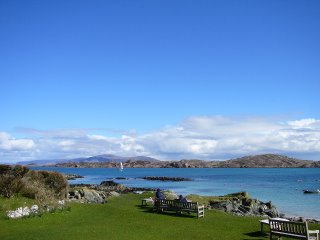
Inside the hotel, I was fascinated by this beautiful vase or bottle, a true work of art. Anyone who knows anything about its maker, please let me know.
Oh, you'd like to know why I was on Iona?
I was enticed by a six-day creative writing course, Into Blue Silence, with tutors/poets/writers Roselle Angwin and Kenneth Steven. My third time; hopefully not my last! Very productive courses and lovely participants. Friendships are forged during those weeks. Greetings to you all -- in particular to Sheena, Elisabeth, Linda, Janis, Andie, Suzanne, Kristina, Cassandra, Maggie, Jo, Hanneke, Jules, Liz, Clare, Liam, Sonia, Polly, Julie-Ann, Diana, Helen, ...!
I was enticed by a six-day creative writing course, Into Blue Silence, with tutors/poets/writers Roselle Angwin and Kenneth Steven. My third time; hopefully not my last! Very productive courses and lovely participants. Friendships are forged during those weeks. Greetings to you all -- in particular to Sheena, Elisabeth, Linda, Janis, Andie, Suzanne, Kristina, Cassandra, Maggie, Jo, Hanneke, Jules, Liz, Clare, Liam, Sonia, Polly, Julie-Ann, Diana, Helen, ...!
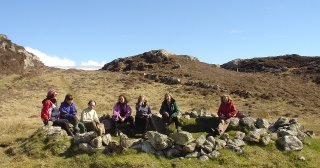 (© photo: Suzanne?? for Linda Saunders, 2 Apr 2006)
(© photo: Suzanne?? for Linda Saunders, 2 Apr 2006)This is some of us on a lovely hike to the Hermit's Cell -- a near circular row of rocks which looks a bit like the outline of a dinghy (thank you, Linda, for this inspiration). As there is a trickle of freshwater nearby, it could well be that someone withdrew to this remote-seeming location overlooking the Atlantic ocean; it could just as well be the remains of a sheep pen. The size is about that of remnants of an Iron Age village that I visited on Lewis (see end of this post or blog section).
These lovelies were a delight -- fritillaries nodding by the side-entrance to the Argyll Hotel, Iona.
These lovelies were a delight -- fritillaries nodding by the side-entrance to the Argyll Hotel, Iona.
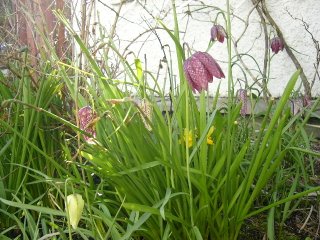
I went to a beach and came back with these gifts of the sea:

Very lucky this spring to have had several days of clear skies.
This is a look back at Iona, with the village, Baile Mor (which I believe means Big Village -- only logical since it is the only village on the island). To the right (north) of the village, you can see the famous Abbey, which is still being rebuilt by members of the Iona Community.
On a sunny day the water in the Sound of Iona really is this incredible turquoise!
This is a look back at Iona, with the village, Baile Mor (which I believe means Big Village -- only logical since it is the only village on the island). To the right (north) of the village, you can see the famous Abbey, which is still being rebuilt by members of the Iona Community.
On a sunny day the water in the Sound of Iona really is this incredible turquoise!
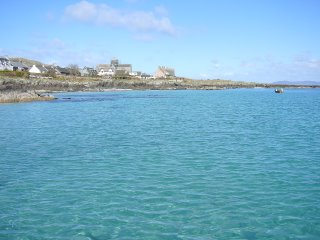
******
Join me now on a trip to Staffa, the tiny basalt island north of Iona. We sailed on a Tuesday, April 4, 06. As you can see, it was a great day, almost too calm for my liking:
Join me now on a trip to Staffa, the tiny basalt island north of Iona. We sailed on a Tuesday, April 4, 06. As you can see, it was a great day, almost too calm for my liking:
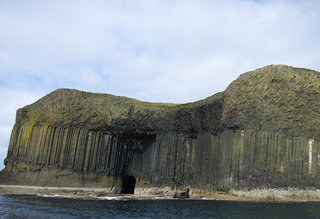 MacInnon's Cave, Staffa, the westernmost of the three caves in Staffa's impressive south face.
MacInnon's Cave, Staffa, the westernmost of the three caves in Staffa's impressive south face.The next photo shows Fingal's Cave, at the island's south-eastern end. A visit to Scotland (and to Staffa, of course) in the 1820s inspired Felix Mendelssohn to compose the concert overture, The Hebrides, in 1830. On a good day, the swells crash into the end of the cave, creating an amazing boom. It can be heard on the western beach of the little island, because the sound carries through the tiny gaps between the columns.
These days, the tourist boats from Iona and Mull land on the eastern shore, making Fingal's Cave easily accessible on foot.
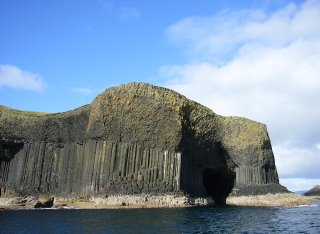
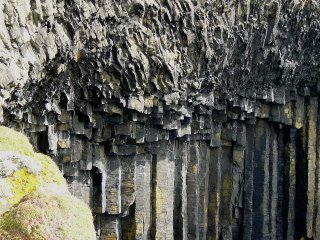 The above is a look at the fabled Fingal's Cave, Staffa, from above, followed by a look up to the ceiling, from the tourists' vantage point at the entrance to the cave. Each basalt stele stands or hangs on its own, allowing water (and whatever is dissolved in it) to seep in through the cracks:
The above is a look at the fabled Fingal's Cave, Staffa, from above, followed by a look up to the ceiling, from the tourists' vantage point at the entrance to the cave. Each basalt stele stands or hangs on its own, allowing water (and whatever is dissolved in it) to seep in through the cracks: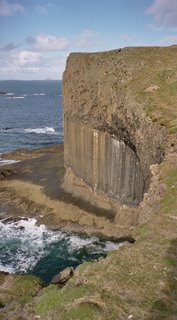 And here are two more detailed views of Fingal's Cave, the first was taken in April 06; the second is from April 04:
And here are two more detailed views of Fingal's Cave, the first was taken in April 06; the second is from April 04:
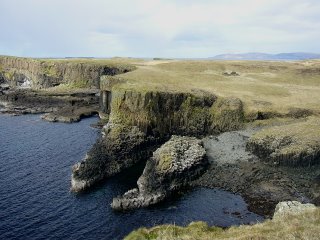 The following picture shows the complicated basalt curves of Clamshell Cove, just north of where modern-day tourists land. I could look at those structures all day long:
The following picture shows the complicated basalt curves of Clamshell Cove, just north of where modern-day tourists land. I could look at those structures all day long: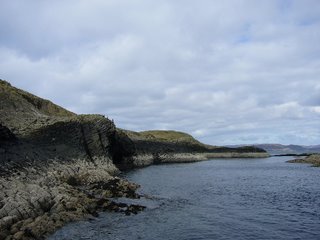 Adjacent to Staffa, on its eastern shore, lies this amazing heap of smaller basalt pillars called The Herdsman. Personally, since my first visit I have been thinking of it as a beached whale about to thrash the larger island with its fluke. See for yourself:
Adjacent to Staffa, on its eastern shore, lies this amazing heap of smaller basalt pillars called The Herdsman. Personally, since my first visit I have been thinking of it as a beached whale about to thrash the larger island with its fluke. See for yourself: I took this photo on a considerably rougher day in April 2004, when I visited the islands for the first time.
I took this photo on a considerably rougher day in April 2004, when I visited the islands for the first time.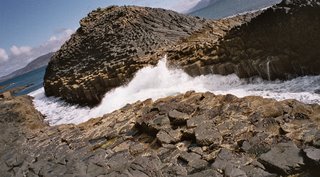 Basalt steles come in hexagons, heptagons or octogons. Nature -- seaweed and the sun -- combined to give me this amazing sight (another photo taken in April 04, between Staffa and The Herdsman, below the tourists' causeway):
Basalt steles come in hexagons, heptagons or octogons. Nature -- seaweed and the sun -- combined to give me this amazing sight (another photo taken in April 04, between Staffa and The Herdsman, below the tourists' causeway): This is the beginning (or the end) of the giant's causeway that leads across the sea all the way to Antrim in Ireland. Picture yourself on a stormy day, with fog, and you can just see shaggy-headed old Fingal coming up out of the wild sea:
This is the beginning (or the end) of the giant's causeway that leads across the sea all the way to Antrim in Ireland. Picture yourself on a stormy day, with fog, and you can just see shaggy-headed old Fingal coming up out of the wild sea: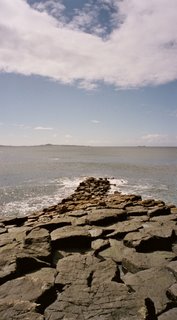 Two years ago, the sea was a bit rougher, and my very last photograph taken on that occasion shows a wave rushing towards our boat along the narrow channel between Staffa and The Herdsman:
Two years ago, the sea was a bit rougher, and my very last photograph taken on that occasion shows a wave rushing towards our boat along the narrow channel between Staffa and The Herdsman: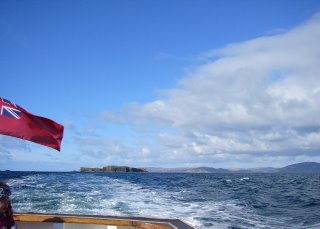 ******
******In April 2005, after my stay on Iona, I rented a car and drove all over Mull, back to the mainland by the Fishnish ferry and on up into the Highlands, then down again to catch a plane out of Edinburgh. Here are some impressions -- as you will see, the weather was not always perfect, but it was always spectacular and special. I WAS glad, however, to have the four-wheeled coracle nearby.
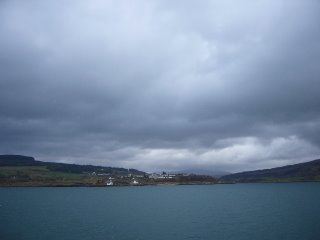 ... but I don't usually look back too long. I'm going to see new places. Here comes Morvern, Lochaline seen from the Fishnish Ferry!
... but I don't usually look back too long. I'm going to see new places. Here comes Morvern, Lochaline seen from the Fishnish Ferry!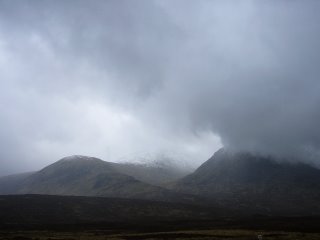 Glen Coe Bidean-nam-Bian
Glen Coe Bidean-nam-Bian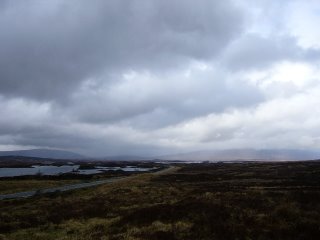 Rainbow and clouds near Loch Tulla -- again: perhaps I was hallucinating in the cold and rainy weather... :)
Rainbow and clouds near Loch Tulla -- again: perhaps I was hallucinating in the cold and rainy weather... :)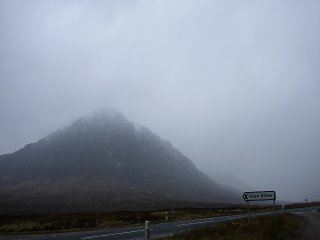 Glen Etive, Buachaille Etive Mor -- oh, was it ever cold and dreich up there! But magnificent. I'm hoping to return in summer.
Glen Etive, Buachaille Etive Mor -- oh, was it ever cold and dreich up there! But magnificent. I'm hoping to return in summer.I took the following photos on Maundy Thursday, April 13, 2006. The first two show the stunning standing stone complex at Callanish (I) on the Outer Hebridean Isle of Lewis. A truly magical place. Shame the first picture doesn't render four or five skylarks trilling their hearts out high above the site.
Glad I had it to myself for a while, before the crowds started trickling in at about midday.
Glad I had it to myself for a while, before the crowds started trickling in at about midday.
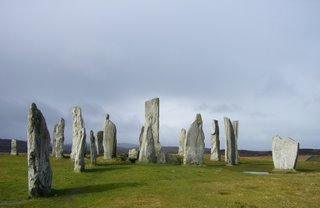 (standing East of the stones)
(standing East of the stones)In typical Hebridean fashion, the glorious weather didn't last, of course, as the second picture shows. No criticism intended here -- I love the changeability, the never-quite-knowing-what-the-day-will-bring.
 (standing West of the stones)
(standing West of the stones)The same afternoon, I came across this reconstructed Iron Age (ca 2,400 to 2,600 years ago) house near Tobson on Great Bernera, Isle of Lewis. The original village resurfaced when a particularly stormy winter washed away the sand from the nearby beach. Sadly, I could only look at the house from the outside. Its floor is dug quite deep into the sand so that it must have been quite comfortable, if snug, for people and animals living in it.
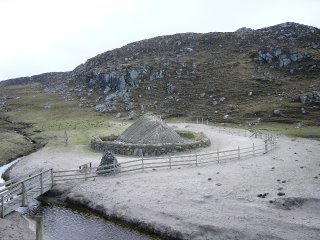 This is the beach beyond the rear end of the Iron Age house. A squall was moving inland fast -- less than five minutes after taking this photo I raced to my little rented car for shelter from tiny pellets of hail.
This is the beach beyond the rear end of the Iron Age house. A squall was moving inland fast -- less than five minutes after taking this photo I raced to my little rented car for shelter from tiny pellets of hail.
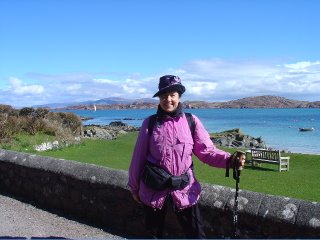
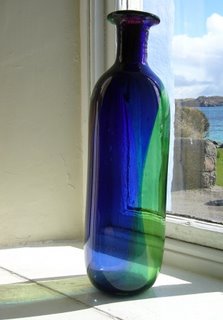
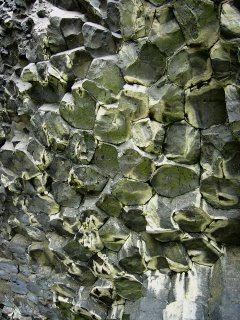
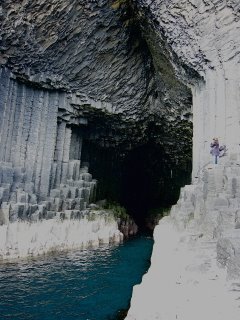
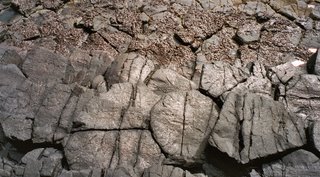
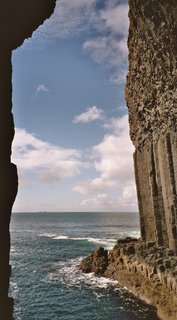
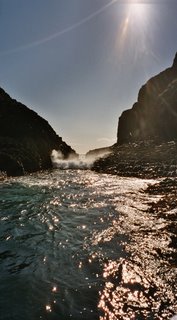

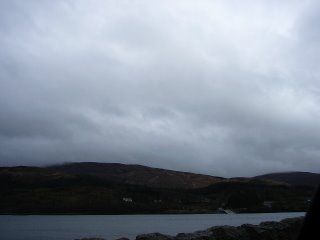
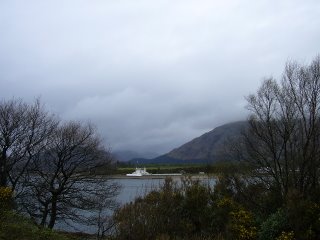
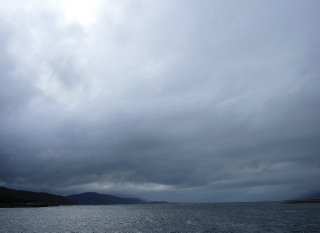
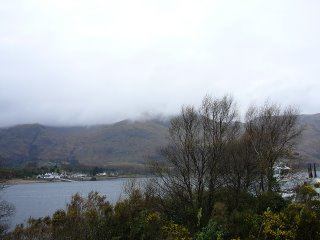
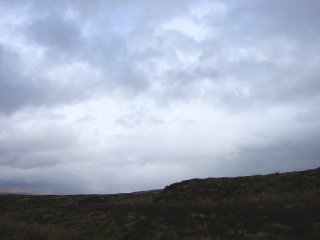
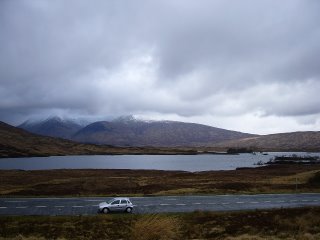
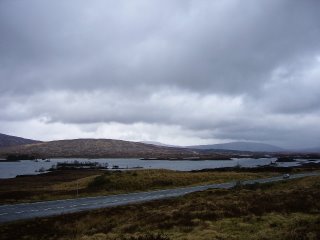
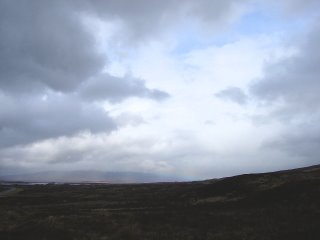
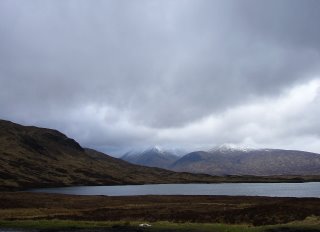
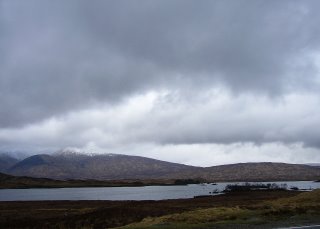





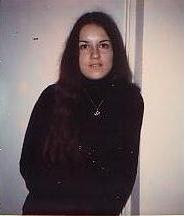

7 comments:
What a stunning blog. I'm really impressed by the the photos and look forward to further entries. Mind you, 04.00am is a bit early or late to be up working on the computer!
Hmmm, seems the time clock is a bit out.
Margaret, tes photos sont superbes.
A faire rêver les amoureux des Iles britaniques!
Great pictures and good comments.
Man möchte unverzüglich die Koffer packen und hinfahren!
Gorgeous shots of Scotland! Bet their tourist industry would like to have some of them!
Love, Pat and Dick
Da hast du ein vielseitiges Fotoalbum zusammengestellt.
Die Bilder von Schottland sind ganz eindrücklich. Sie erinnern mich zum Teil an Land's End in Cornwall.
Ich habe gar nicht gewusst, dass du so gerne gärtnerst und einen grünen Daumen hast.
Brigitte
Your blog is wonderful - perhaps next year I will go to Scotland on holiday...
Everything connects: the guide on my trip to Antarctica is a photographer and he recommended a [similar digital] camera as yours.
Bettina
Post a Comment